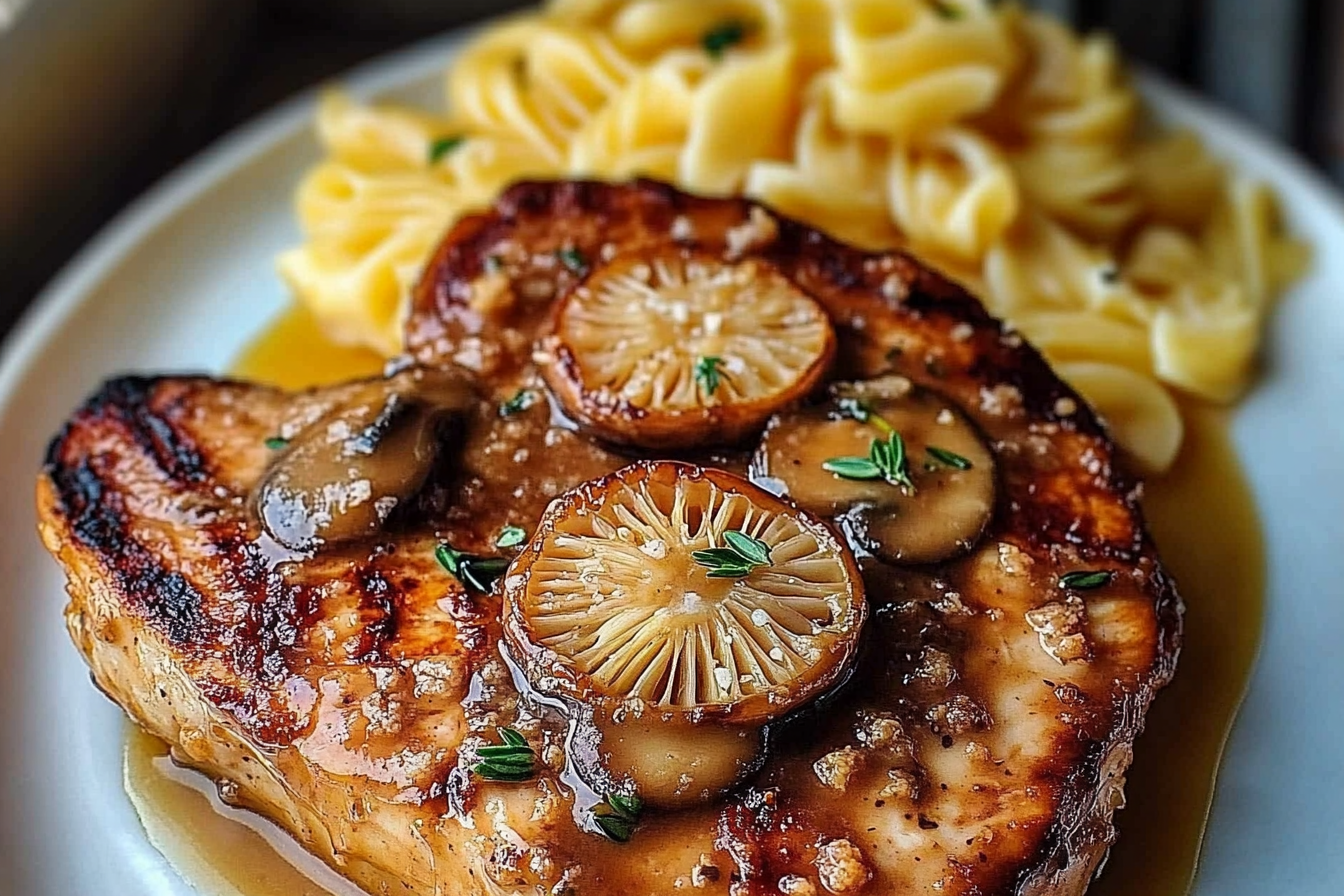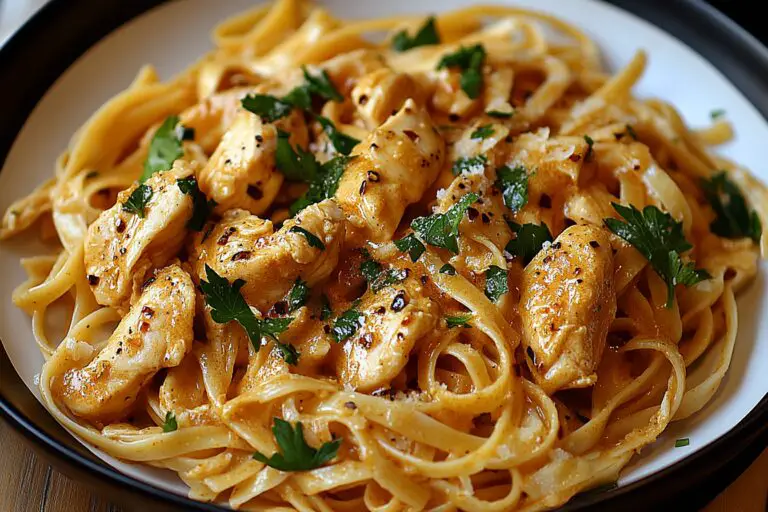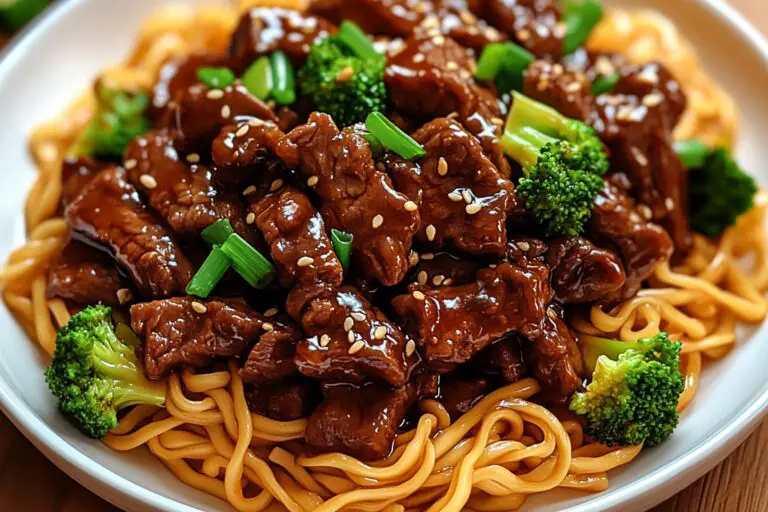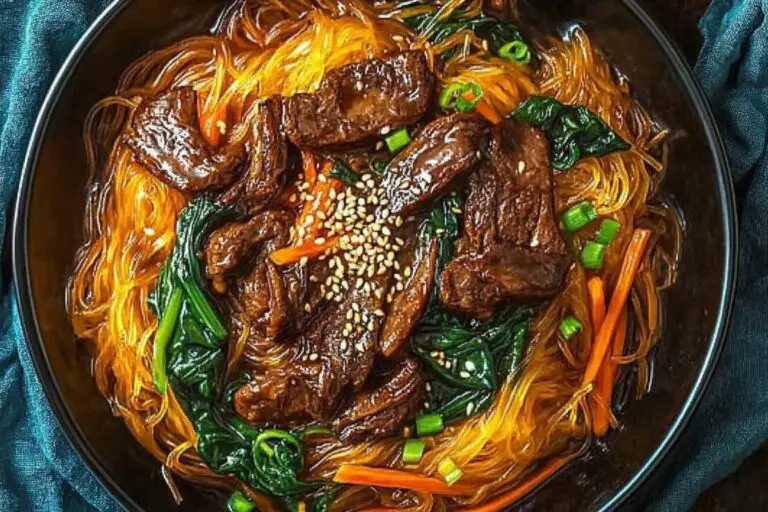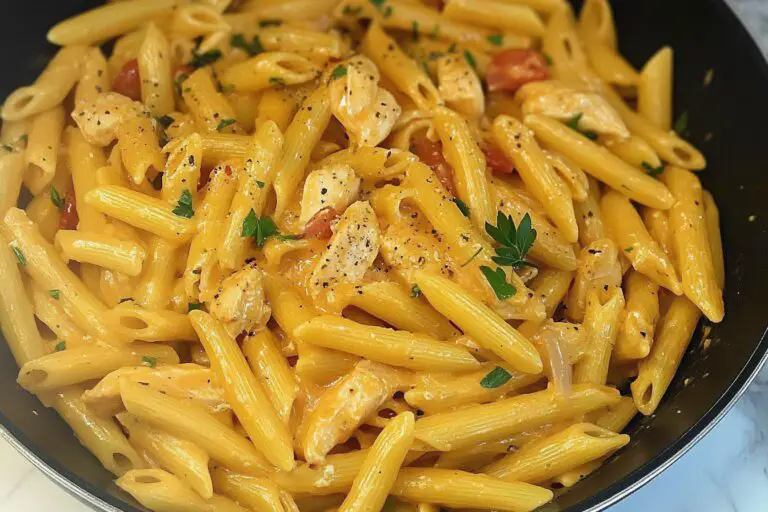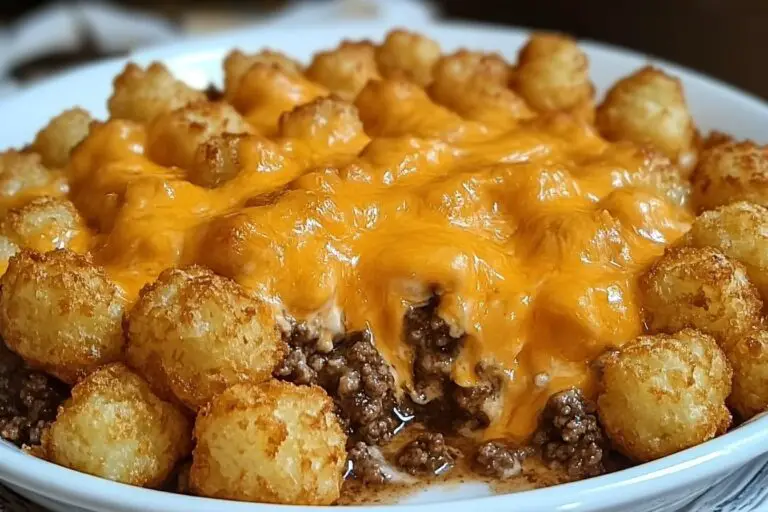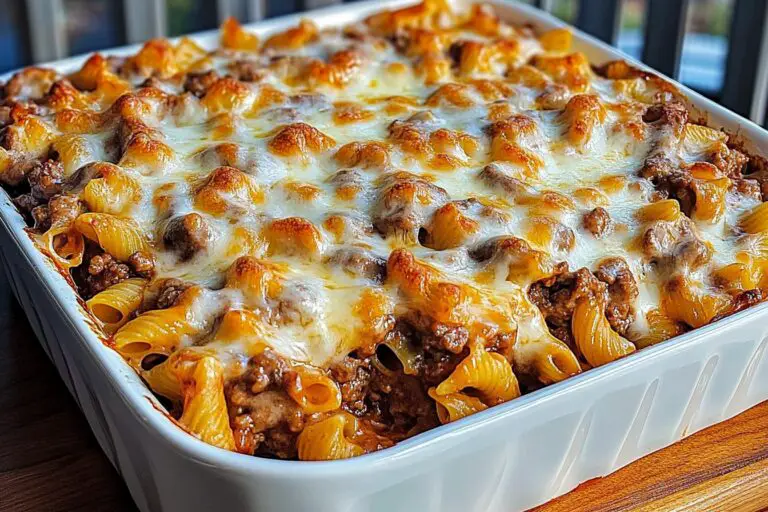Pasta with Creamy Mushroom Sauce
Introduction
Every cook knows that certain dishes hold a special place in the hearts (and appetites) of their loved ones. This article dives into a recipe that has become a true favorite in one household, irresistible to the husband who simply cannot resist asking for seconds. Perfectly blending flavors and nutrition, this dish not only satisfies hunger but also brings a sense of comfort and nostalgia to the dining table.
Detailed Ingredients with measures
– 1 pound of ground beef
– 1 medium onion, chopped
– 2 cloves garlic, minced
– 1 can (15 ounces) kidney beans, rinsed and drained
– 1 can (15 ounces) black beans, rinsed and drained
– 1 can (14.5 ounces) diced tomatoes, undrained
– 2 tablespoons tomato paste
– 1 cup beef broth
– 1 teaspoon chili powder
– 1 teaspoon cumin
– Salt and pepper to taste
– 1 cup shredded cheese (cheddar or Mexican blend)
– Optional: sour cream and chopped green onions for garnish
Prep Time
15 minutes
Cook Time, Total Time, Yield
Cook Time: 30 minutes
Total Time: 45 minutes
Yield: Serves 4-6
This delightful dish is sure to become your family’s new favorite. The combination of spices and hearty ingredients creates a meal that feels cozy and fulfilling. Serve it with your favorite sides, and be prepared for compliments and requests for another helping!
Detailed Directions and Instructions
Step 1: Prepare Your Ingredients
Gather all necessary ingredients before you begin. This ensures a smooth cooking process.
Step 2: Preheat the Oven
Set your oven to the suggested temperature according to your recipe to ensure it’s ready when you are.
Step 3: Mix the Dry Ingredients
In a large bowl, combine the dry ingredients thoroughly to ensure even distribution throughout the mixture.
Step 4: Combine Wet Ingredients
In a separate bowl, whisk together the wet ingredients until well blended.
Step 5: Incorporate Ingredients Together
Gradually add the wet mixture to the dry mixture, stirring gently until just combined. Be careful not to overmix.
Step 6: Prepare the Baking Dish
Grease or line your baking dish with parchment paper to prevent sticking.
Step 7: Pour Batter into the Dish
Transfer the batter into the prepared baking dish, spreading it evenly to ensure uniform cooking.
Step 8: Bake
Place the dish in the preheated oven and bake for the recommended time, checking for doneness with a toothpick.
Step 9: Cool
Once baked, remove from the oven and let it cool in the dish for a few minutes before transferring it to a wire rack.
Step 10: Serve
Once completely cooled, slice and serve. Enjoy it as it is or add your favorite toppings for extra flavor.
Notes
Note 1: Ingredient Substitutions
If you’re missing an ingredient, look for alternatives that won’t significantly affect the taste or texture of the dish.
Note 2: Storage
Store any leftovers in an airtight container to maintain freshness. They can usually be kept at room temperature for a limited time or refrigerated for longer shelf life.
Note 3: Serving Suggestions
Consider pairing this dish with sides or drinks that complement its flavor profile for a complete meal experience.
Note 4: Adjusting Sweetness
Taste the batter before baking to adjust the sweetness if necessary, adding more sugar or sweetener depending on your preference.
Cook techniques
Roasting
Roasting involves cooking food evenly in an oven using dry heat. This technique is perfect for meats and vegetables, caramelizing their natural sugars, and developing rich, deep flavors.
Sautéing
Sautéing is a method that involves cooking food quickly in a small amount of fat over relatively high heat. This technique is great for vegetables, proteins, and creating flavorful sauces.
Simmering
Simmering is cooking food gently in a liquid at a low temperature, just below boiling. This method is ideal for making soups, stews, and braises, allowing flavors to meld together.
Baking
Baking is a cooking process that uses dry heat in an oven, often for desserts and breads. This technique relies on the heat surrounding the food to cook it evenly.
Grilling
Grilling is a technique that involves cooking food over direct heat, such as on a grill or an open flame. It adds a smoky flavor to meats and vegetables and creates a delicious crust.
Blanching
Blanching is briefly cooking food in boiling water, then quickly cooling it in ice water. This technique is useful for preserving color, texture, and nutrients in vegetables.
Steaming
Steaming involves cooking food by suspending it above boiling water and allowing steam to cook it. This method retains nutrients and moisture, making it ideal for vegetables and fish.
Braising
Braising combines both dry and moist heat, typically searing meat first, then cooking it slowly in a small amount of liquid. This technique results in tender and flavorful dishes.
Frying
Frying is a cooking method where food is submerged in hot oil, creating a crispy exterior. It can be done in various styles, such as deep frying, pan frying, or shallow frying.
Slow Cooking
Slow cooking uses low temperatures over an extended period to tenderize tough cuts of meat and meld flavors, making it perfect for stews and casseroles.
FAQ
What is the best way to roast vegetables?
The best way to roast vegetables is to cut them into uniform sizes, coat them lightly in oil, season them with salt and pepper, and roast them at high heat until caramelized.
How do I know when my sautéed food is done?
Sautéed food is done when it is tender and has developed a golden-brown color. You can also taste a small piece to check for doneness.
What should I do if my simmering food is boiling instead?
If your food is boiling instead of simmering, reduce the heat until you see small bubbles rising to the surface. A gentle simmer is ideal for flavor development.
Can I bake in a convection oven?
Yes, you can bake in a convection oven; in fact, it helps food cook more evenly and often reduces cooking time. Just adjust the temperature and timing according to the recipe.
What’s the key to grilling meat?
The key to grilling meat is to preheat the grill, oil the grates, and not to overcrowd the grill. Allow the meat to sear properly before flipping for optimal flavor and texture.
Why do we blanch vegetables before freezing them?
Blanching vegetables before freezing helps preserve their color, flavor, and nutritional value by stopping enzyme actions that can cause loss of quality.
What type of pots are best for steaming?
The best pots for steaming are those that have a tight-fitting lid and a steamer basket or insert. Stainless steel and bamboo steamers are popular options.
How long should I braise meat?
The braising time varies depending on the cut of meat, but it generally takes a couple of hours at low heat to ensure that tougher cuts become tender and flavorful.
What oil should I use for frying?
The best oils for frying are those with high smoke points, such as vegetable oil, peanut oil, or canola oil, which can withstand the high temperatures without burning.
Can I slow cook without a slow cooker?
Yes, you can slow cook in a Dutch oven or a heavy pot on the stovetop or in the oven at low temperatures, mimicking the effects of an actual slow cooker.

Conclusion
Indulging in a dish that brings comfort and satisfaction is always a joy, especially when it becomes a favorite for family members. The secret to culinary success often lies in the combination of flavors and the care taken in preparation. By mastering these recipes, you can create memorable meals that keep everyone coming back for more.
More recipes suggestions and combination
Classic Macaroni and Cheese
Pair this creamy delight with crispy bacon or a hint of truffle oil for an elevated twist.
Spaghetti Carbonara
Enhance the authentic taste by using guanciale instead of pancetta, and finish with a sprinkle of Pecorino Romano cheese.
Chicken Alfredo
Add steamed broccoli or sautéed mushrooms for a nutritious boost alongside the rich Alfredo sauce.
Beef Stroganoff
Serve it over egg noodles or mashed potatoes, with the option to add a dollop of sour cream for extra creaminess.
Stuffed Bell Peppers
Mix in quinoa or brown rice along with the traditional ground meat for a healthier alternative that’s just as filling.
Homemade Pizza
Experiment with toppings like roasted garlic, artisanal cheeses, or fresh arugula to personalize your pizza night.
Chocolate Chip Cookies
Try incorporating nuts or dried fruit for an added texture and flavor in these classic cookies.

